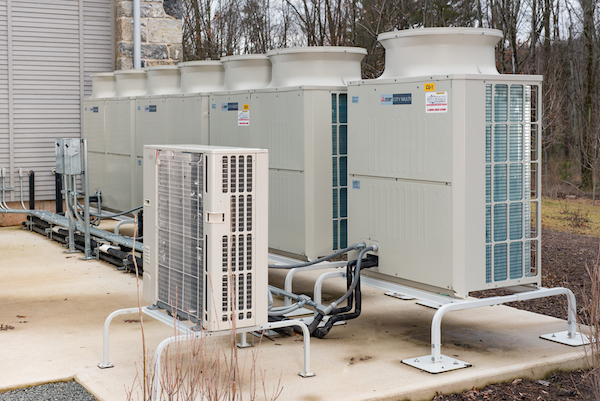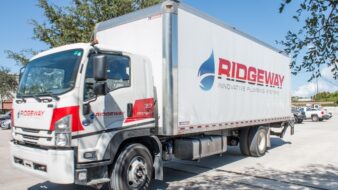When Mark and Gretchen Biedron co-founded the The Willow School (Willow), Gladstone, New Jersey, their vision was to create a school that provides students with a space that celebrates learning and collaboration, and that fosters ethical relationships between people and the natural systems that support them. Sustainability drives both the curriculum and building design for Willow, so when the school was designing its fourth building – the Health, Wellness and Nutrition Center – the project team selected a Variable Refrigerant Flow (VRF) zoning system from Mitsubishi Electric Cooling & Heating (Mitsubishi Electric).

Willow has a proud history of green building. In 2002, it built the first LEED® Gold certified school building in the United States and, in 2007, the first LEED Platinum certified school building in New Jersey. Ever the pioneers, Biedron and his team wanted to up the ante for the new Health, Wellness and Nutrition Center. This 20,000-square-foot building contains four classrooms, a faculty room, a movement area, a dining room, a commercial kitchen, health/wellness spaces and a teaching kitchen – which further support the curriculum and mission of the school. “With this project, we were focused on taking the Living Building Challenge (LBC). Being a ‘living building’ means that everything in the building is 100 percent electric. Basically we were trying to answer the question, ‘How do you make a building like a tree?’ Well, a tree uses nothing but sunlight, so we have to as well,” said Biedron.

Michael Farewell, head designer at Farewell Architects, Princeton, New Jersey, was one of several professionals called in to solve that challenge. He designed the foundation of Willow’s energy efficiency: a high-performance envelope that he described as “a combination of effective machinery – where all of the energy is generated by solar panels on the roof. It’s a whole package that saves energy without having to use any.”
Given the generated energy, it is no surprise that Biedron and his team decided between an all-electric geothermal system and VRF to further Willow’s sustainability goals. These systems also offer countless other benefits. Nitish Joy of Loring Consulting Engineers (Loring), Princeton, was the lead mechanical engineer on the project. He said the selection process included “comparative data projections for each system [geothermal vs. VRF] as paired with the super-insulated envelope. VRF was well ahead on net-zero efficiency.” Vin Farese, principal at Loring, noted that VRF solved an additional challenge: “As the LBC prohibited the use of fossil fuels in the building, the commercial kitchen had to be electric. That drove Willow towards selecting high-efficiency, electric heat pumps and using photovoltaic [panels] to offset the energy used.”

For Farewell, it was also important that occupants be able to personalize their spaces. “The focus of the school is to be able to connect to the local environment – woodlands, storm-water runoff, meadows and orchards – but there is also an obvious focus on the quality of teaching, so each space is customized to the individual experience of the teacher, student, chef, administration, whomever.”
For Biedron, the choice was more a question of environmental responsibility, especially while trying to be LBC-certified: “Geothermal has an ecology all its own and no one seemed to know what the results of introducing that to the environment would be. The whole system is underground; what goes into fixing something that’s wrong underground? The beauty of Mitsubishi [Electric] is that everything is above ground and easily accessible.”

Each decision the project team made took careful consideration. Farese said, “Every load was tracked and analyzed. Every amp and watt was accounted for. Nothing was missed” while following the rigid LBC guidelines. For example, LBC guidelines ensure that product shipping does not require increased fossil fuel consumption. This regulation can become challenging. Biedron said, “To be Living Building certified, we had to make sure that we were getting our products from within a certain distance, but Mitsubishi [Electric] products just weren’t within that limit. However, Mitsubishi [Electric] quickly provided us with all of the documentation we needed to be able to get an exception to this rule. We proved that their products would be so energy-efficient over their lifetime that the one-time transportation expense would deliver a system that would ultimately save on cost and energy year after year after year.”
The inclusion of Lossnay ERV units is another way Willow has been able to further eliminate inefficiencies. When agreeable conditions make natural ventilation favorable – including having outdoor temperatures between 65 and 80 degrees Fahrenheit – a controls system prompts teachers and students to open classroom windows for outside air. Otherwise, the Lossnay ERVs enable this new building to recover energy from exhaust air to simultaneously cool or heat outside ventilation air as it enters the building.

Willow’s exceptional efficiency is easily illustrated inside the building’s Energy Gallery, where a touch-screen interface toggles between data from all energy systems inside the high-performance envelope. As Biedron said, “We had to remain net-zero or net-positive. With solar panels and the Mitsubishi [Electric] system we were able to achieve that. A conventional facility built to code uses between 100-150 kBtu per square foot … but this building uses only 21 kBtu per square foot – and that was including our commercial kitchen. If you remove the kitchen, it would only use 15 kBtu per square foot. When people look at this building, they’re looking at one of the most energy-efficient buildings in the country.”
Although Mitsubishi Electric systems can be conveniently stored in a space no bigger than a closet, Biedron wants their presence to be known. “Each of the classroom units is housed in a small closet at the back of the room. Indoor units for Think Spaces are in the Mezzanine and condensers are on a concrete pad outside. We don’t want to hide our units; in fact, we really try to open them up so anyone can come up and see them. We also have a whole page on our master touch- screen that shows the efficiency of our Mitsubishi [Electric] system so we can show people and inform them about VRF,” said Biedron.
In addition to this project earning LBC certification, Biedron is most enthusiastic about Willow being recognized as a Green Ribbon School. “We win so many awards for how green we are, but we also want to make sure that we are showcasing that same awareness for our academic rigor.” The United States Department of Education introduced the Green Ribbon Program to recognize schools that provide strong academics and work to reduce environmental impact and to improve the health of students and staff. “It’s really the responsibility of the educational community to teach children how the planet works, why that’s important and how to use energy efficiently.”




Join the conversation: